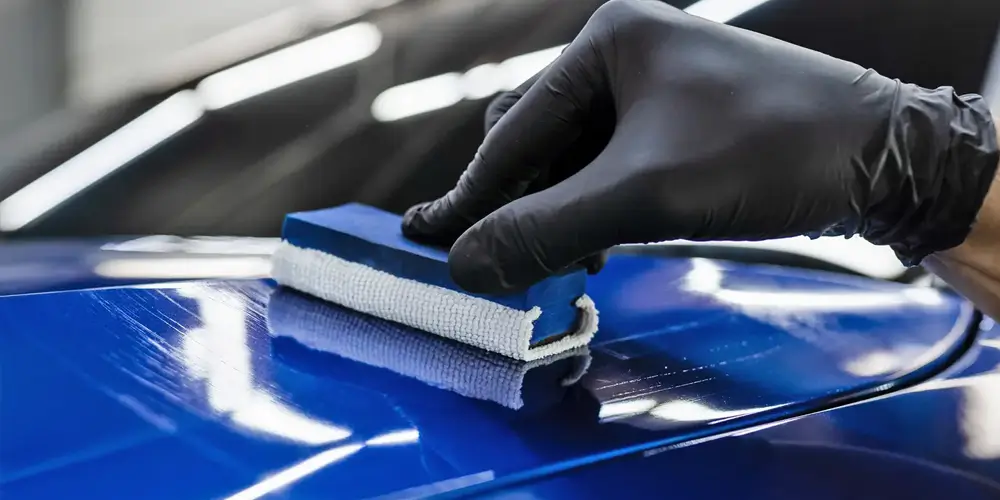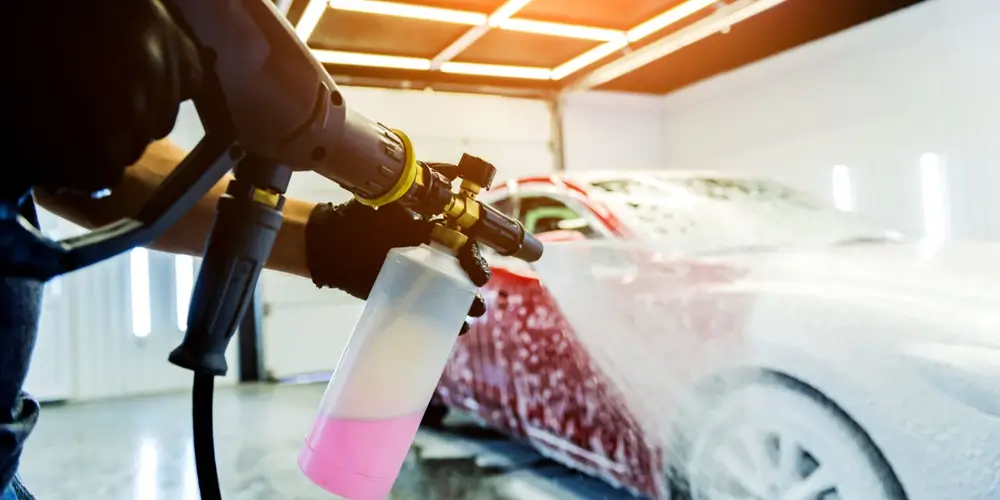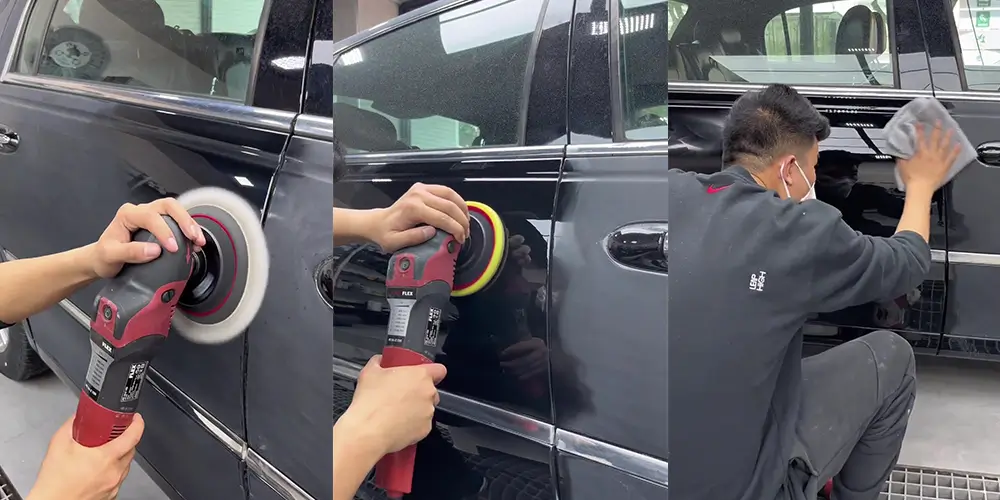Cut Polishing Compounds
Cut polishing compounds are essential tools in the automotive, marine, aerospace, and woodworking industries, among others. They are designed to remove imperfections, scratches, and other surface defects from various materials, leaving behind a smooth and glossy finish. At SYBON, we understand the importance of high-quality cut polishing compounds in achieving impeccable results, which is why we have developed a range of premium products tailored to meet the diverse needs of our customers.
Understanding the Different Types of Cut Polishing Compounds
Cut polishing compounds come in different formulations, each suited for specific applications and materials. These formulations typically vary in abrasive grit size, composition, and cutting action. Common types include:
1.Heavy-cut compounds: Designed for aggressive removal of deep scratches, oxidation, and paint defects. These compounds contain larger abrasive particles and are ideal for initial stages of polishing.
2.Medium-cut compounds: Slightly less aggressive than heavy-cut compounds, these are suitable for removing moderate defects and refining the surface before final polishing.
3.Light-cut compounds: Finer abrasives characterize these compounds, making them ideal for eliminating minor imperfections and achieving a high-gloss finish without dulling the surface.
Factors to Consider When Choosing a Cut Polishing Compound
When selecting a cut polishing compound, several factors should be taken into account:
1.Material type: Different materials require specific formulations to achieve optimal results. For example, compounds formulated for automotive paint may not be suitable for use on wood or metal surfaces.
2.Severity of defects: The extent of imperfections on the surface will dictate the abrasive strength needed. Deep scratches and heavy oxidation will require a more aggressive compound, while minor swirl marks may be addressed with a lighter abrasive.
3.Application method: Cut polishing compounds can be applied by hand, orbital polisher, or rotary buffer. The chosen application method may influence the choice of compound and the results achieved.
4.Desired finish: Consider the desired level of gloss and clarity when selecting a cut polishing compound. Some compounds are designed to leave a high-gloss finish, while others prioritize defect removal over gloss enhancement.
How to Use Cut Polishing Compounds Effectively
To achieve optimal results with cut polishing compounds, it is essential to follow proper techniques and procedures:
1.Begin by thoroughly cleaning the surface to remove any dirt, debris, or contaminants that may interfere with the polishing process.
2.Apply a small amount of cut polishing compound to the surface or directly onto the polishing pad.
3.Work in small sections, applying moderate pressure and overlapping each pass to ensure uniform coverage.
4.Use the appropriate speed and technique for the chosen application method, whether by hand or machine.
5.Monitor the progress regularly and stop polishing once the desired level of correction has been achieved.
6.Remove any residue with a clean microfiber cloth and inspect the surface for any remaining defects.
Step-by-Step Guide to Using Cut Polishing Compounds
1.Prepare the surface: Clean the surface thoroughly to remove any dirt, grease, or contaminants.
2.Select the appropriate compound: Choose a cut polishing compound based on the severity of defects and desired finish.
3.Apply the compound: Apply a small amount of compound onto the surface or directly onto the polishing pad.
4.Work in sections: Divide the surface into manageable sections and work methodically, applying moderate pressure and overlapping each pass.
5.Monitor progress: Regularly inspect the surface to gauge the effectiveness of the polishing process and adjust as needed.
6.Wipe off residue: Once the desired level of correction has been achieved, remove any residue with a clean microfiber cloth.
7.Inspect the finish: Evaluate the surface for any remaining defects and make additional passes if necessary.
8.Apply protection: Apply a suitable wax or sealant to protect the freshly polished surface and maintain its shine.
Common Mistakes to Avoid When Using Cut Polishing Compounds
1.Using too much pressure: Excessive pressure can lead to heat buildup and damage the surface.
2.Overworking the compound: Continuously polishing the same area for an extended period can result in over-correction and swirl marks.
3.Skipping preparation steps: Failing to properly clean and prepare the surface can hinder the effectiveness of the polishing process.
4.Using incompatible products: Mixing different brands or types of compounds may yield unpredictable results and compromise the finish.
5.Neglecting to test: Always perform a test spot before proceeding with full-scale polishing to ensure compatibility and assess the effectiveness of the chosen compound.
Tips for Achieving Flawless Results with Cut Polishing Compounds
1.Start with the least aggressive compound: Begin with a lighter abrasive and progressively move to more aggressive compounds as needed to minimize the risk of over-correction.
2.Use a clean polishing pad: Regularly clean or replace polishing pads to prevent contamination and ensure consistent results.
3.Work in a controlled environment: Polishing in direct sunlight or extreme temperatures can affect the performance of the compound and the quality of the finish.
4.Follow manufacturer's recommendations: Refer to the product instructions and guidelines provided by the manufacturer for best results.
5.Practice proper technique: Mastering proper polishing techniques, including speed, pressure, and pad angle, is key to achieving flawless results.
Safety Precautions When Using Cut Polishing Compounds
1.Wear appropriate personal protective equipment, including gloves and eye protection, to prevent contact with abrasive particles and chemical irritants.
2.Work in a well-ventilated area to minimize exposure to fumes and airborne particles.
3.Avoid prolonged skin contact with polishing compounds, as some formulations may cause irritation or allergic reactions.
4.Store compounds in a cool, dry place away from direct sunlight and sources of heat to prevent degradation and maintain effectiveness.
5.Follow proper disposal guidelines for used polishing pads, cloths, and empty containers to minimize environmental impact.
Conclusion
In conclusion, cut polishing compounds are invaluable tools for achieving flawless finishes on a wide range of materials. By understanding the different types of compounds available, considering key factors when selecting a product, and following proper techniques and safety precautions, users can achieve professional-quality results with confidence. At SYBON, we are committed to providing innovative and high-performance polishing solutions to meet the evolving needs of our customers.
Source of this article:https://www.sybonbest.com
Get to know us through more channels:




